To efficiently create multiple charts for visual analytics, a dashboard is recommended. This topic explains how to view chart data, configure chart features, and arrange charts.
Entry Points
Please log on to the or the Quick BI console and navigate to the create dashboard page using any of the methods below.
Method 1: Create an ad hoc query from Quick Start on the Workbench tab within a workspace.
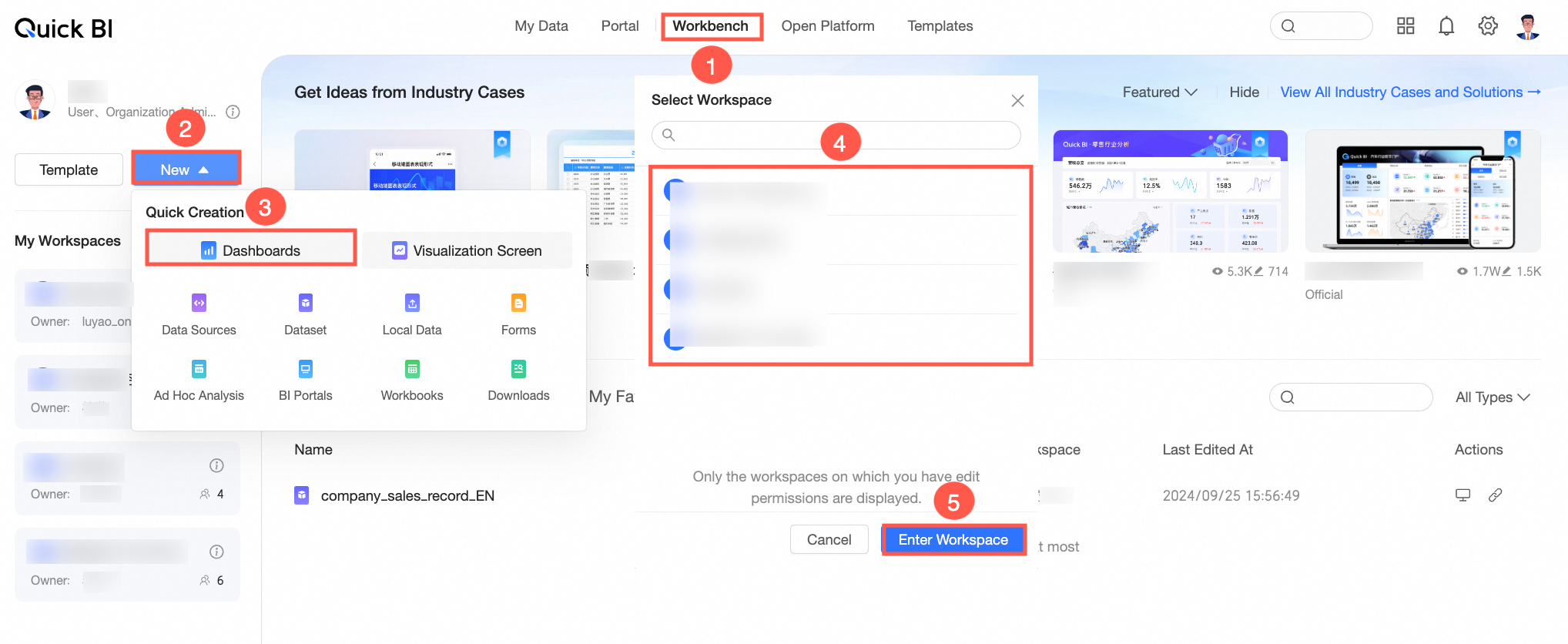
Method 2: Create an ad hoc query via the left-side navigation pane on the Workbench tab within a workspace.
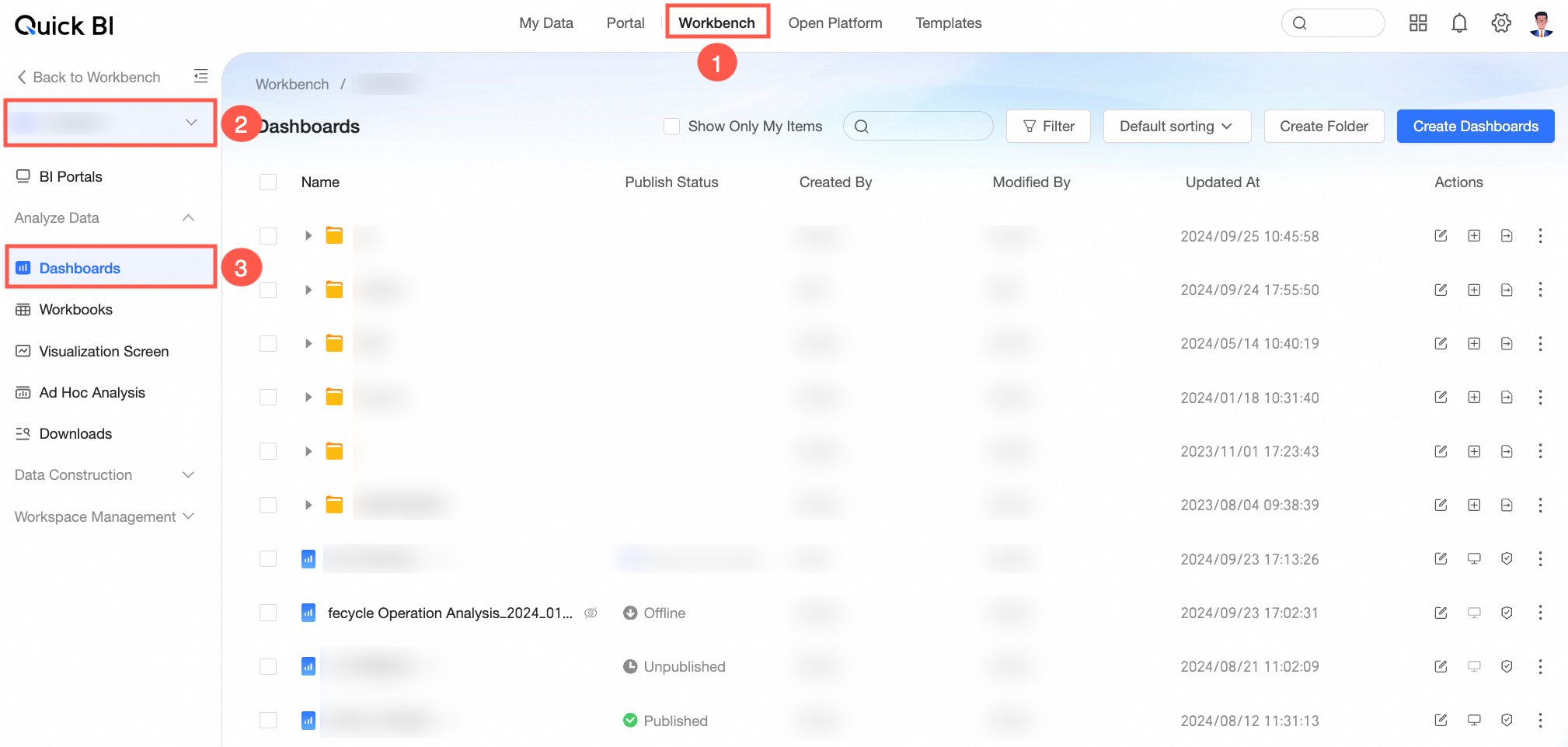
Method 3: Create from the dashboard module within a workspace.
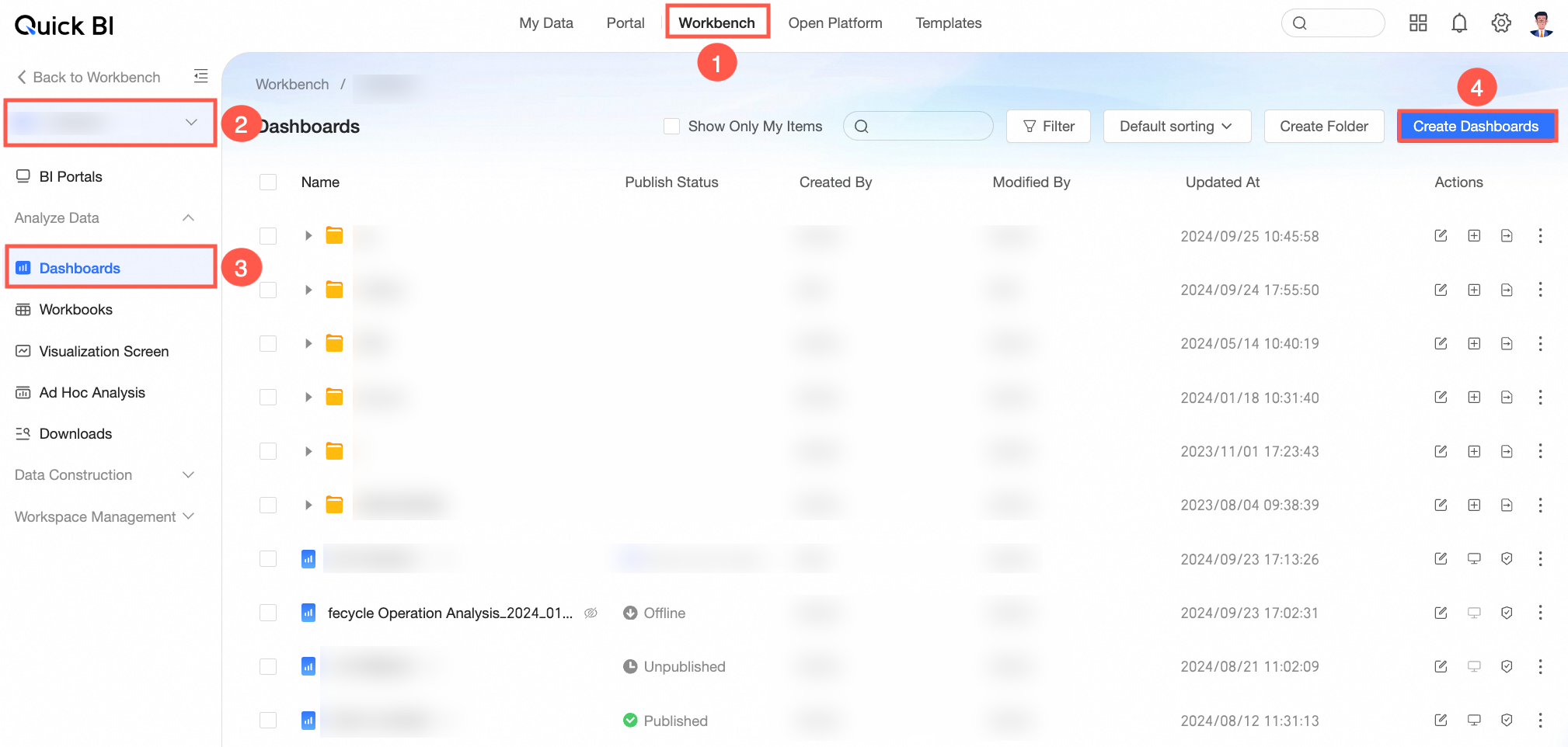
When creating a dashboard through these entry points, no dataset is selected by default. You must select Add chart and Configure dataset on the edit page.
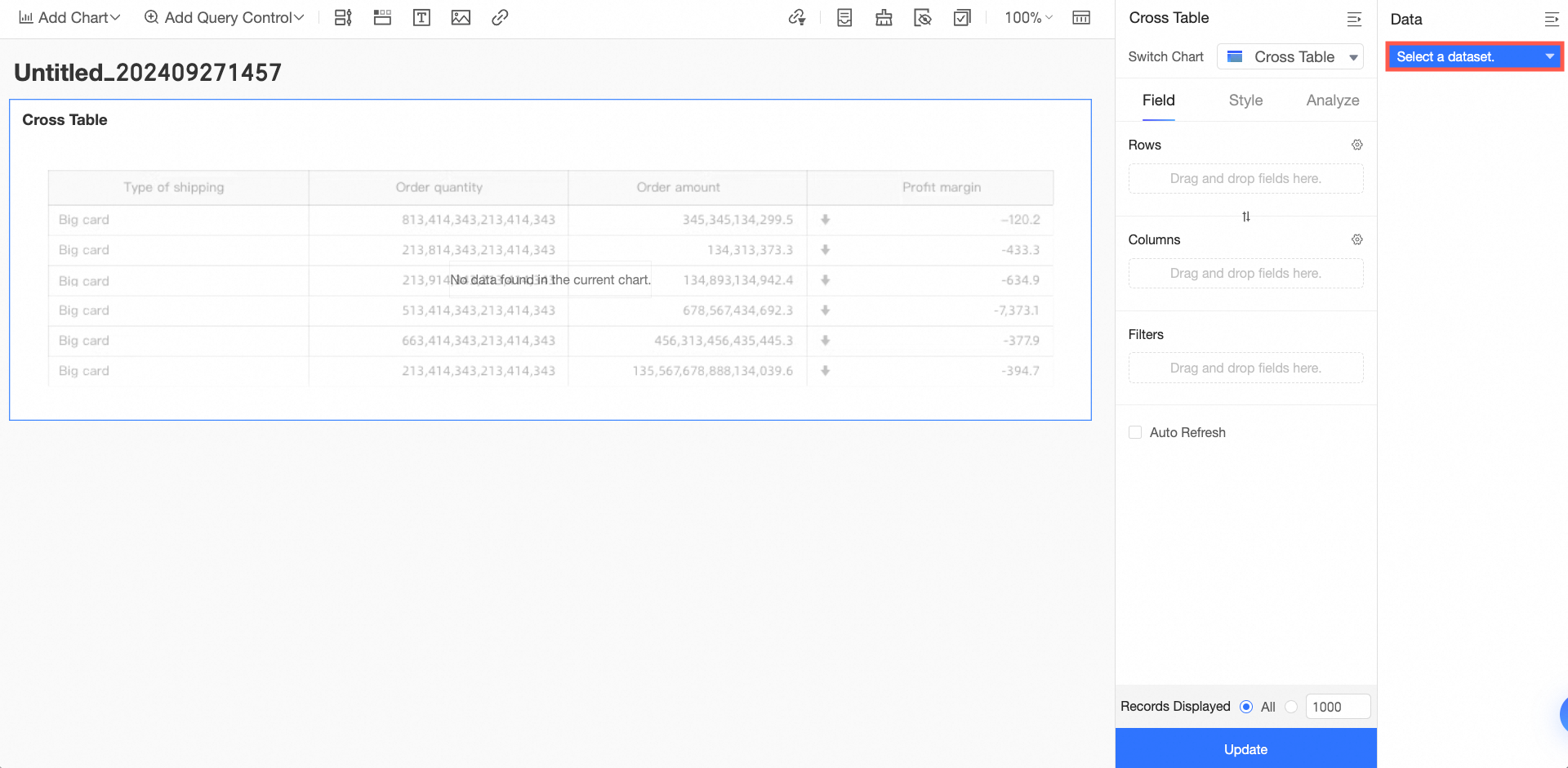
Method 4: Create an ad hoc query on the Datasets page.
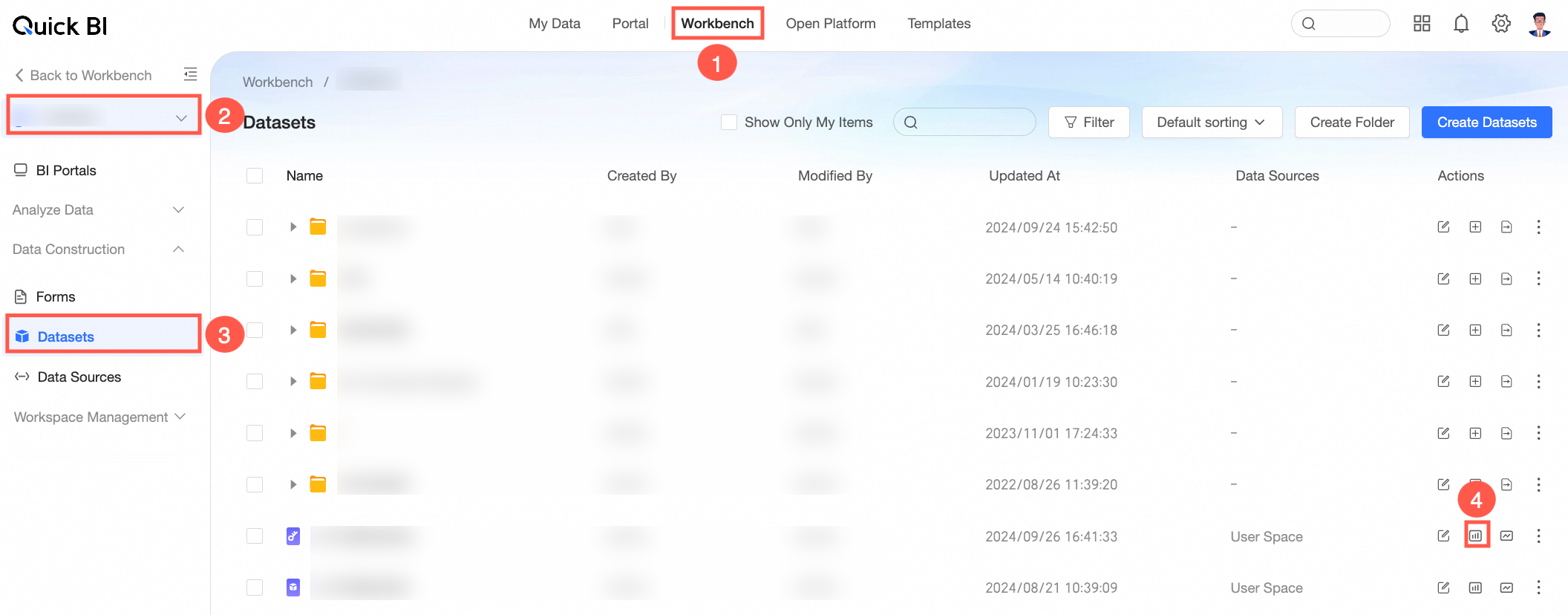
Method 5: Create from the dataset edit page, as shown in the following image .
.
After creating a dashboard from an existing dataset using Method 4 or Method 5, the data panel on the right will automatically load the corresponding dimensions and measures. Simply drag them to the field area after adding a chart.
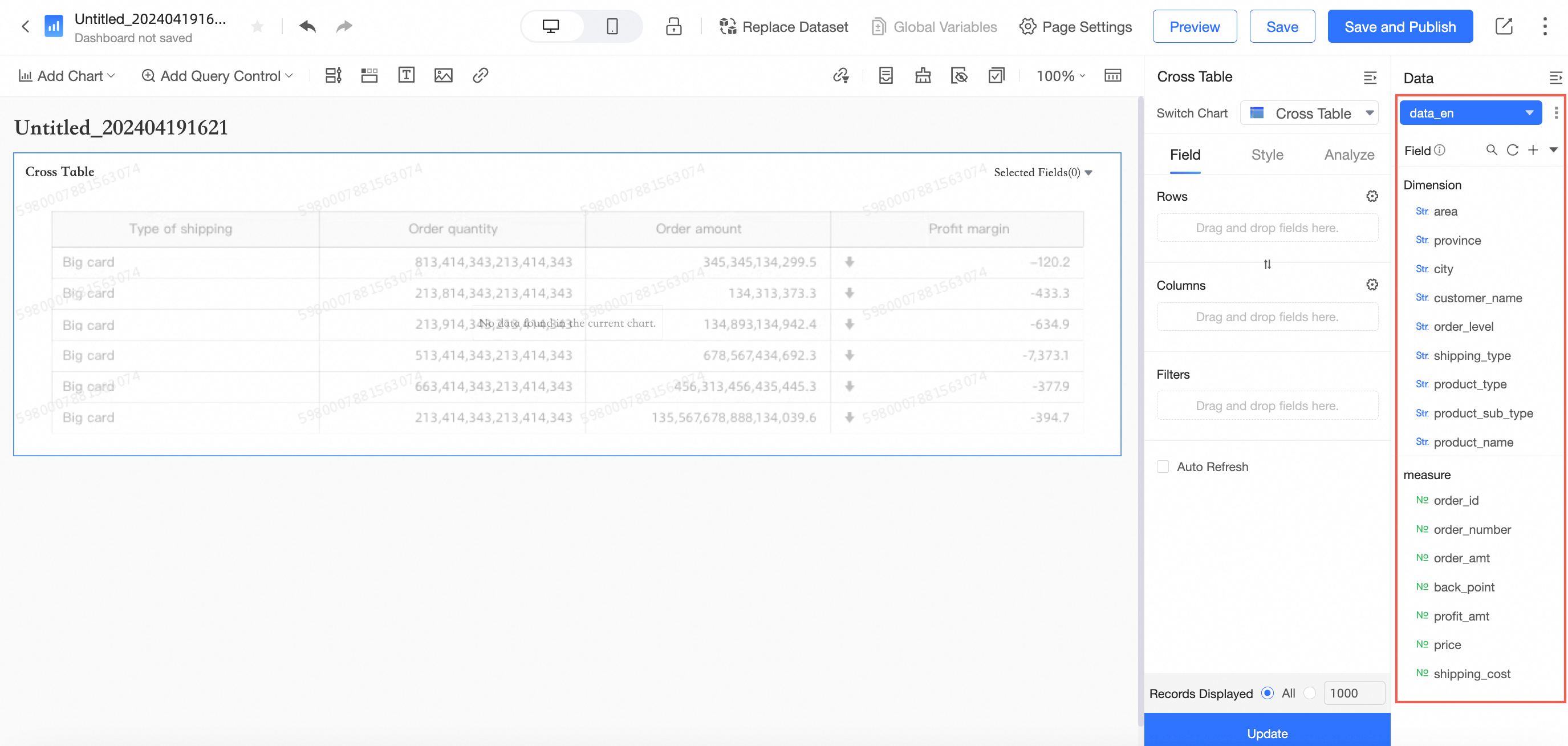
General Operations in the Display Area
In the display area of the dashboard, you can perform the following operations:
Category | Description |
View chart data | View chart data on a dashboard. |
Modify the title of a chart | Modify the title of a chart in an efficient manner. |
Manage charts | Copy, move, and delete a chart. |
Export data | Export PNG images or export data of a chart as a PDF file or an Excel file and store the exported file to your on-premises machine or the OSS server. |
Adjust the dashboard layout | Adjust the position of charts in the dashboard. |
Panel search | When building a dashboard, users can use the panel search feature to quickly find configuration items. |
View Chart Data
This section describes efficient methods for viewing data on a chart.
On the dashboard edit page, select a chart.
Click the display legend on the chart to view data for a specific value.
You can click on the chart's display legend to view data for a specific value.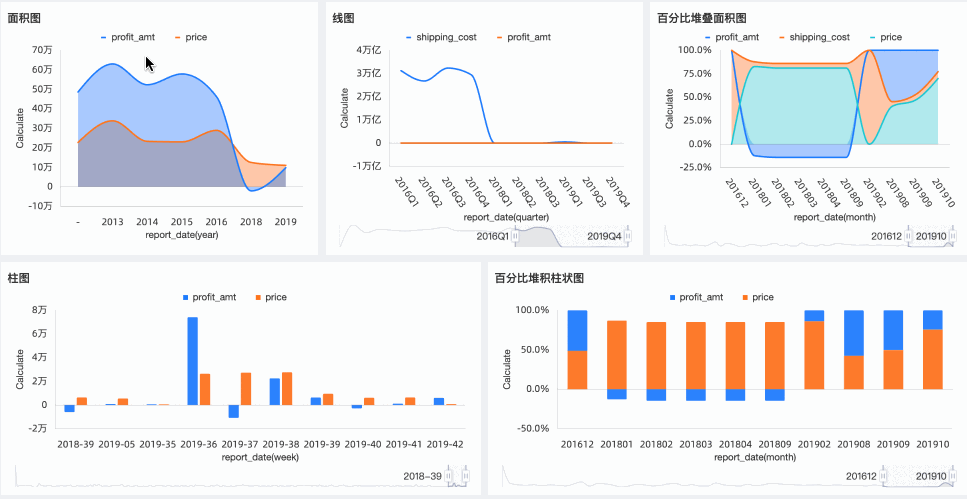
For additional details on chart effect configuration, refer to interactive analysis.
Modify the Title of a Chart
This section describes efficient methods for modifying the title of a chart.
On the dashboard edit page, select a chart.
Hover over the chart title and double-click to edit the title.
Hover your cursor over the chart title and double-click to edit the title text.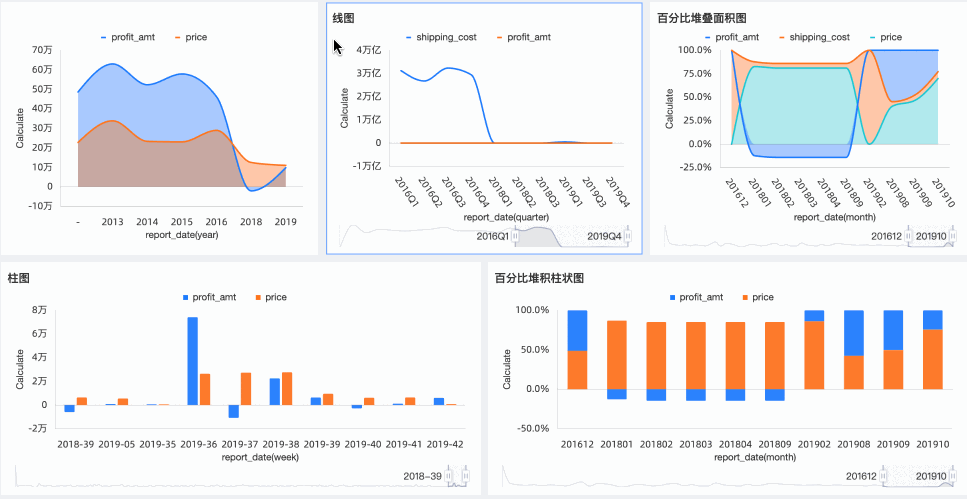
Manage Charts
Hover over the upper right corner of the chart and click the  icon to access various operations.
icon to access various operations.
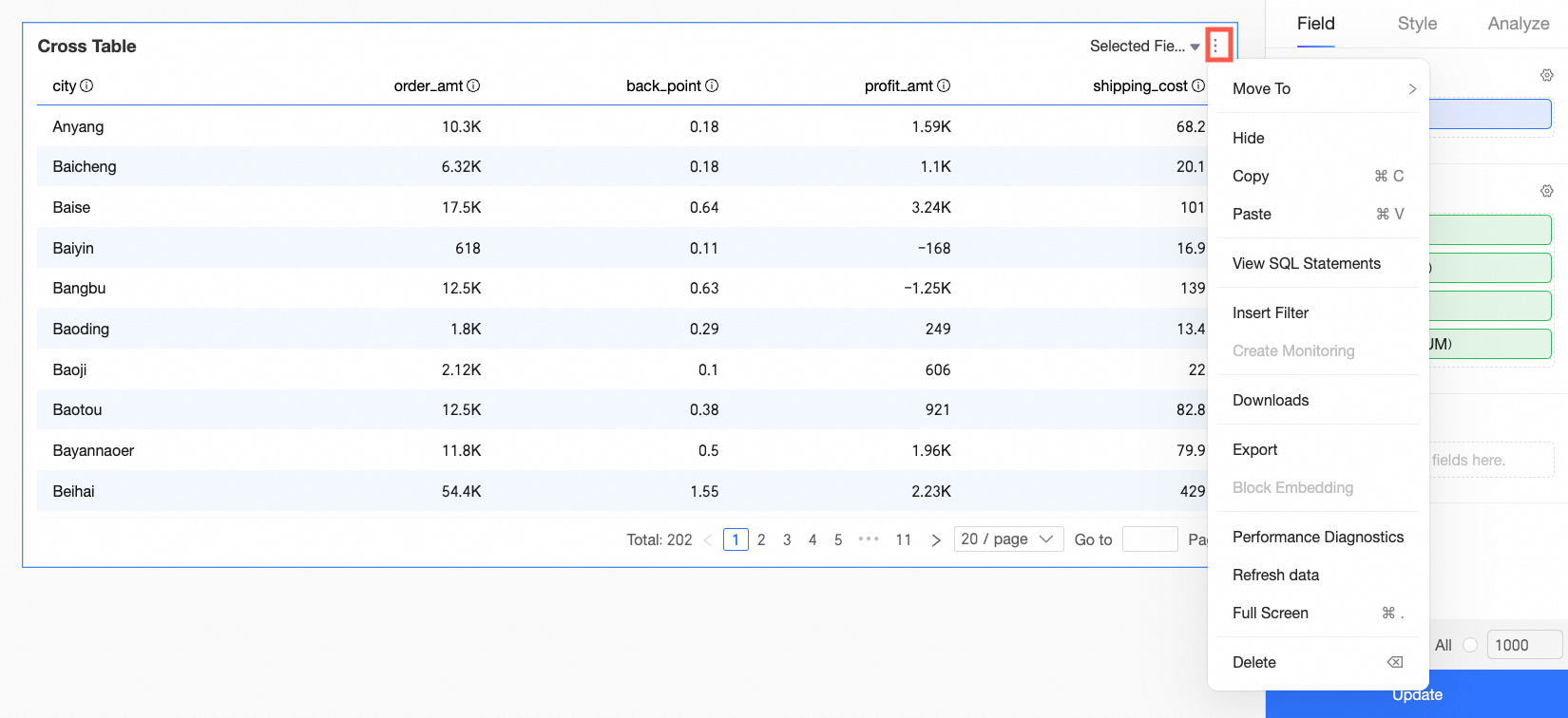
Category | Description |
Move To | Move the chart to a tab container. |
View Data | View chart data information. 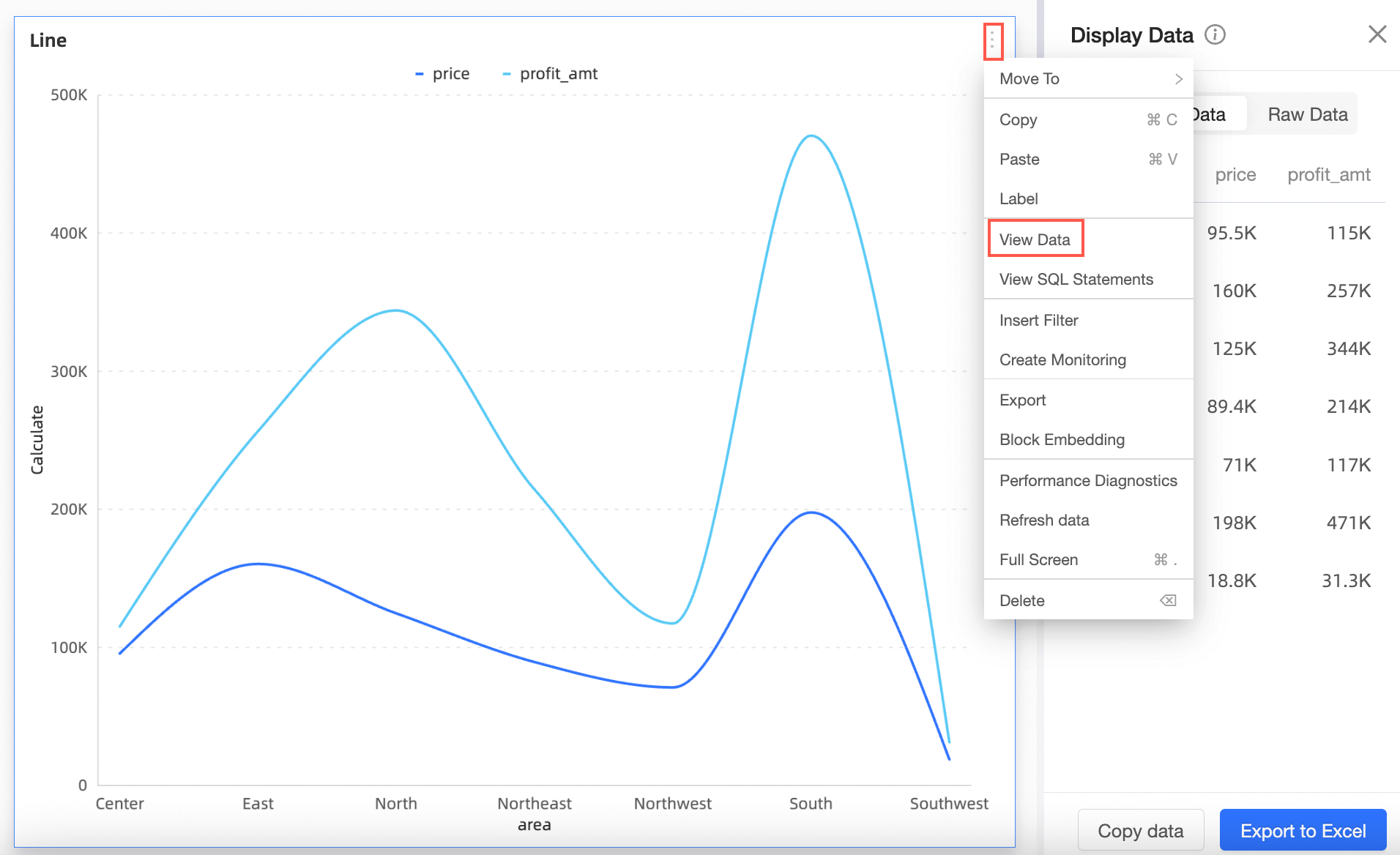
Note Cross tables and detail tables do not support data viewing. The data format that you can view supports Formatted Data and Raw Data. Formatted Data: Data processed by the database (for example, rounding to two decimal places when there are many decimal places, or carrying units when the value is too large). 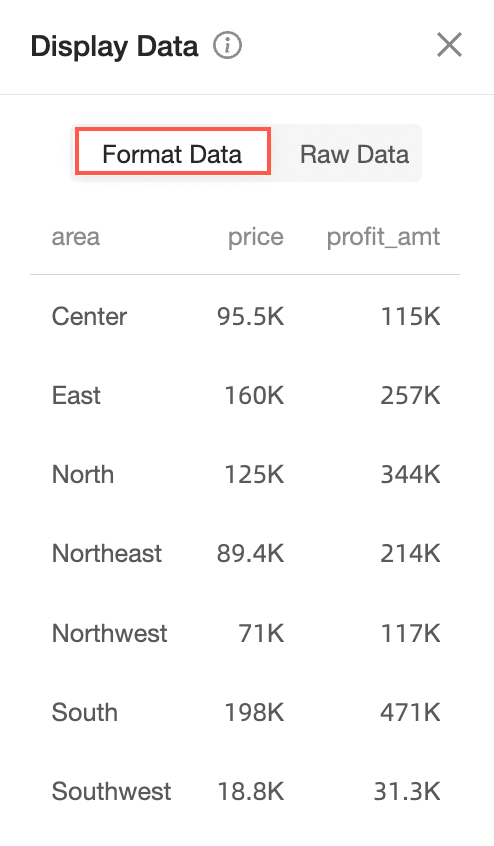
Raw Data: Unprocessed database data. 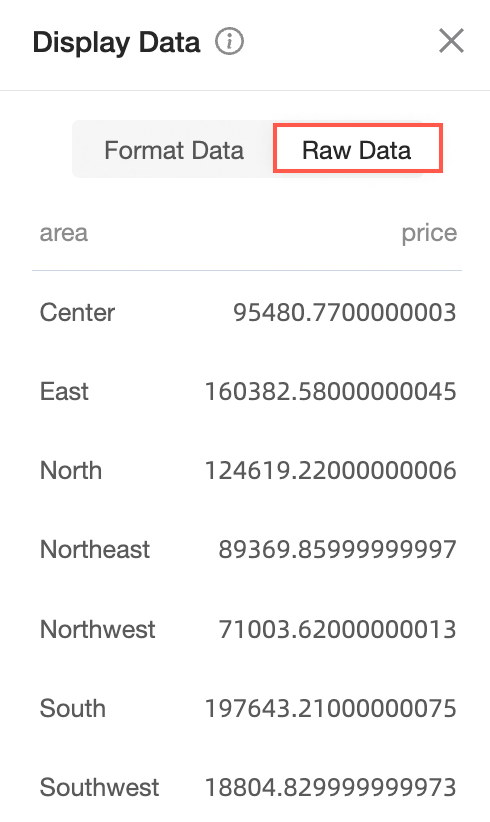
|
Copy | Copy the chart. |
Paste | Paste the copied chart to the current dashboard. |
Annotation | Use icons, background colors, and value colors to highlight specific parts of the chart. For more information, see annotation. |
View SQL | View the SQL statement of the chart. |
Insert Query Conditions | Add a filter for the chart. For more information, see create query conditions in a chart. |
Create Monitoring | Monitor alert information of chart metrics. For more information, see configure monitoring. |
Export | Export PNG images or export data of a chart as a PDF file or an Excel file and store the exported file to your on-premises machine or the OSS server. For more information, see this topic export data. |
Embed Block | After embedding, you can only view the embedded chart. |
Performance Diagnosis | Diagnose the query performance of the current chart and provide diagnostic details and optimization suggestions. |
Refresh data | Refresh the current chart data. |
Full screen | Show the chart in full-screen mode. In full-screen mode, you can exit full-screen by clicking the Exit full screen button. |
Delete | Delete the chart. |
Downloads | Create a download for the current chart. Note Only cross tables, new cross tables, and detail tables support this feature. For more information, see create and manage download tasks. |
Export Data
PC Terminal
Within the dashboard page settings, ensure Allow download is selected and Hide global download button is not. This enables you to carry out operations such as global export and single chart export on the dashboard.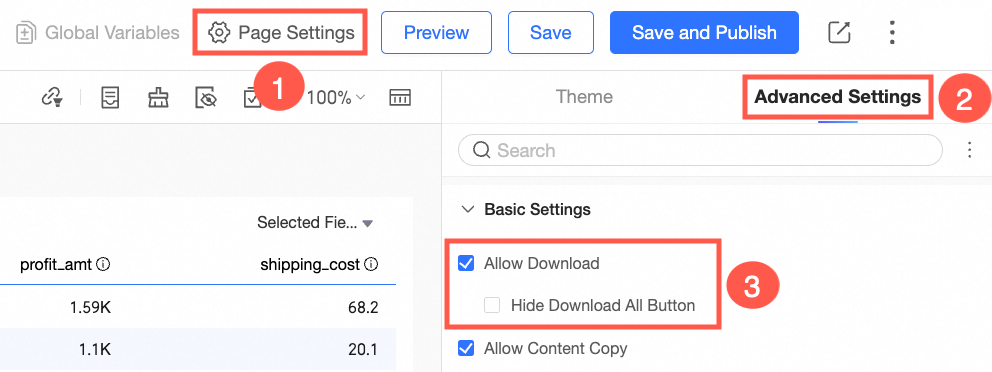
Note
Hiding the global download button will disable the ability to perform a global export in preview mode.
Global Export
To export a dashboard, locate the desired dashboard in the Workbench list and click Preview.

Click the icon in the bottom-right corner  to reveal the export option.
to reveal the export option.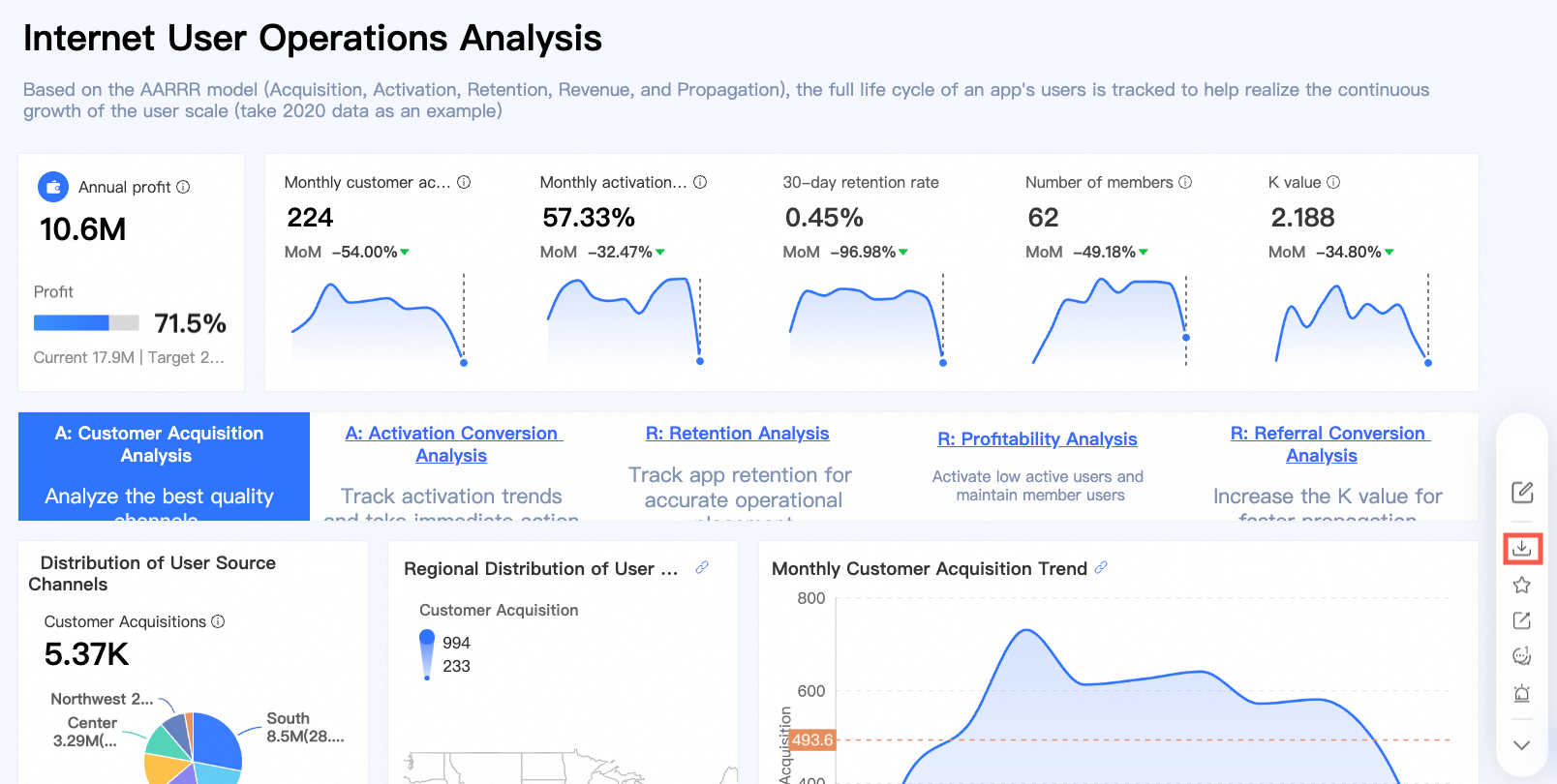
Click Export to proceed to parameter settings.
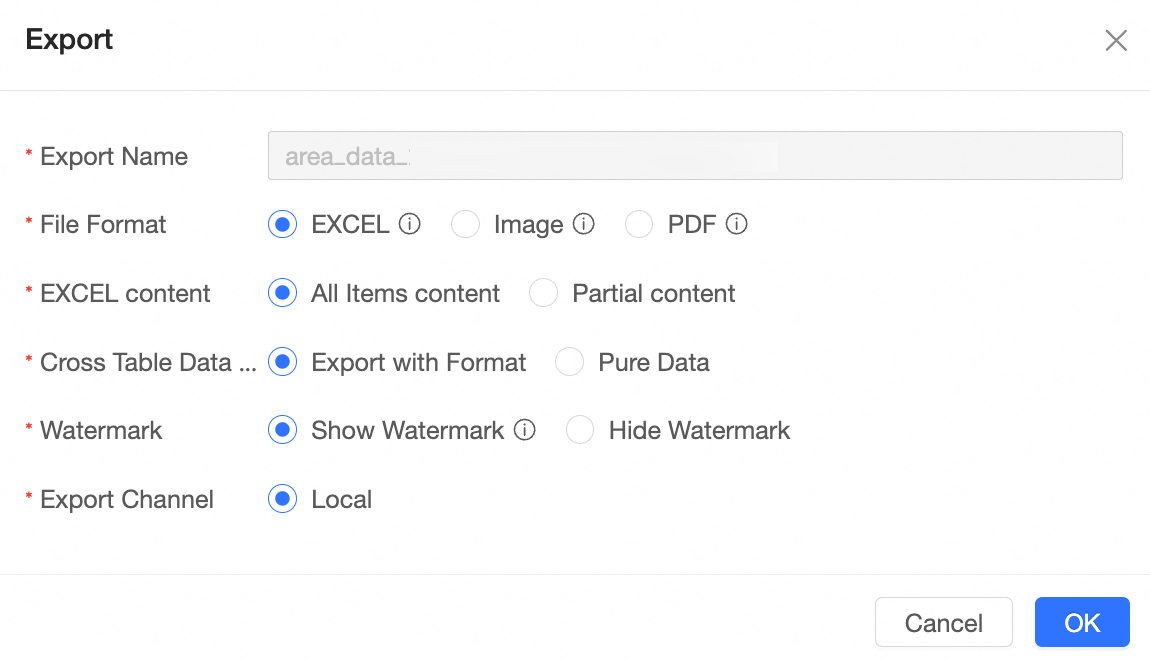
Parameter item | Parameter item description |
Parameter item | Parameter item description |
Export Name | The name of the exported file. You can customize a name. |
File Format | The format of the exported file. Supports exporting in three formats: Image, PDF, and EXCEL. Note Exporting embedded components (external page embedding) and cross-domain accessed images is not allowed. |
EXCEL content | Supports two export methods: Export all and Partial export. If you select Export all, all chart data under the dashboard is exported by default. If you select Partial export, you can select part of the chart data under the dashboard.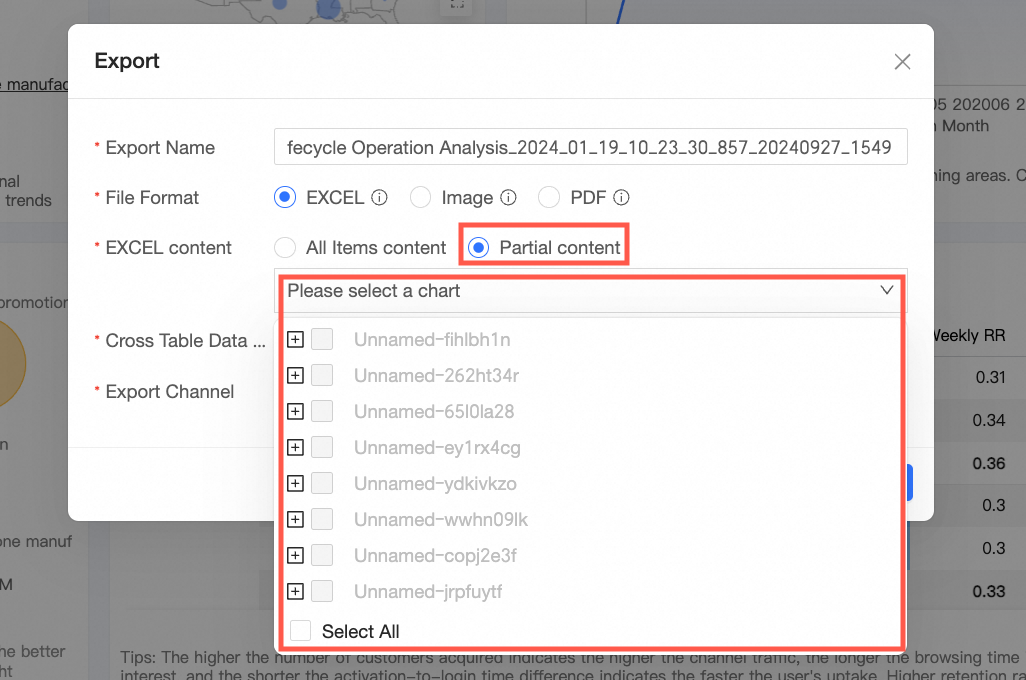
|
Cross Table Data Type | The data format of the cross table that you want to export. The exported cross table data supports two formats: With Format and Pure Data. When the number of cells exceeds 50,000, it is recommended to select the Pure Data type. Only the first 10,000 data records can be exported if you want to export an EXCEL file.
Note This option needs to be configured only when the exported chart is a cross table and the file format is selected as EXCEL. |
Watermark | Support selecting Show watermark or Hide watermark. Note This option needs to be configured only when the file format is selected as EXCEL. |
Export Channel | Supports exporting to Local or OSS server. Note If the current organization has configured a server, you can choose to export to the OSS address. |
Single Chart Export
The following section provides an example of how to export a single cross table.
Note
The organization administrator can configure the data export format only if the export switch is enabled. For more information, see
export control.
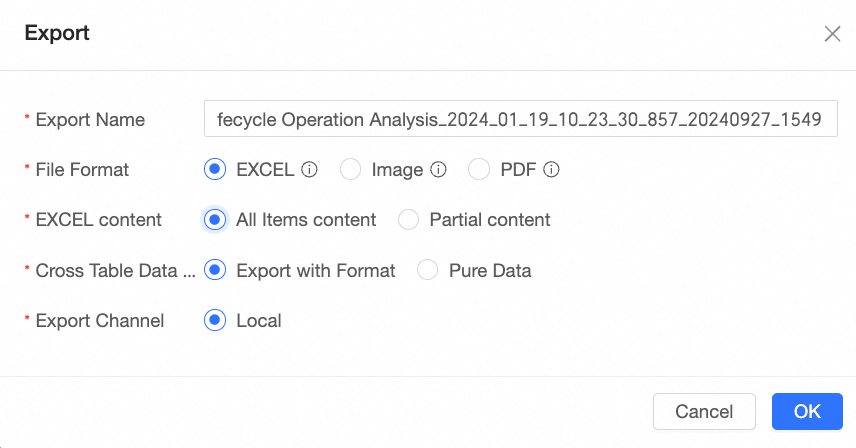
Parameter item | Parameter item description |
Parameter item | Parameter item description |
Export Name | The name of the exported file. You can customize a name. |
File Format | The format of the exported file. Supports exporting in three formats: Image, PDF, and EXCEL. Note Exporting embedded components (external page embedding) and cross-domain accessed images is not allowed. |
Cross Table Data Type | The data format of the cross table that you want to export. The exported cross table data supports two formats: With Format and Pure Data. When the number of cells exceeds 50,000, it is recommended to select the Pure Data type. Only the first 10,000 data records can be exported if you want to export an EXCEL file.
Note This option needs to be configured only when the exported chart is a cross table and the file format is selected as EXCEL. |
Watermark | Support selecting Show watermark or Hide watermark. Note This option needs to be configured only when the file format is selected as EXCEL. |
Export Channel | Supports exporting to Local or OSS server. Note If the current organization has configured a server, you can choose to export to the OSS address. |
Export FAQ
Why aren't images in the chart or background images exported?
Open the browser developer tools and check for a "No Access-Control-Allow-Origin" image access error in the console. If present, it indicates that the image server is not configured for cross-domain access. Please configure cross-domain access on the image resource server.
Open your browser's developer tools and examine the console for a "No Access-Control-Allow-Origin" error related to image access. If such an error is present, it indicates that the image is not set up for cross-domain access. You need to configure the image resource server to allow cross-domain access. If this error is absent, verify that the image link is accessible on its own.
If this error is absent, verify that the image link is accessible on its own.
Why isn't the embedded page exported?
Embedded pages do not support export functionality.
Adjust the Dashboard Layout
Hover over one of the chart's corners until the cursor becomes a double-headed arrow, then drag to resize the chart.
Hover over the chart until the cursor changes to a hand shape, then drag to reposition the chart.
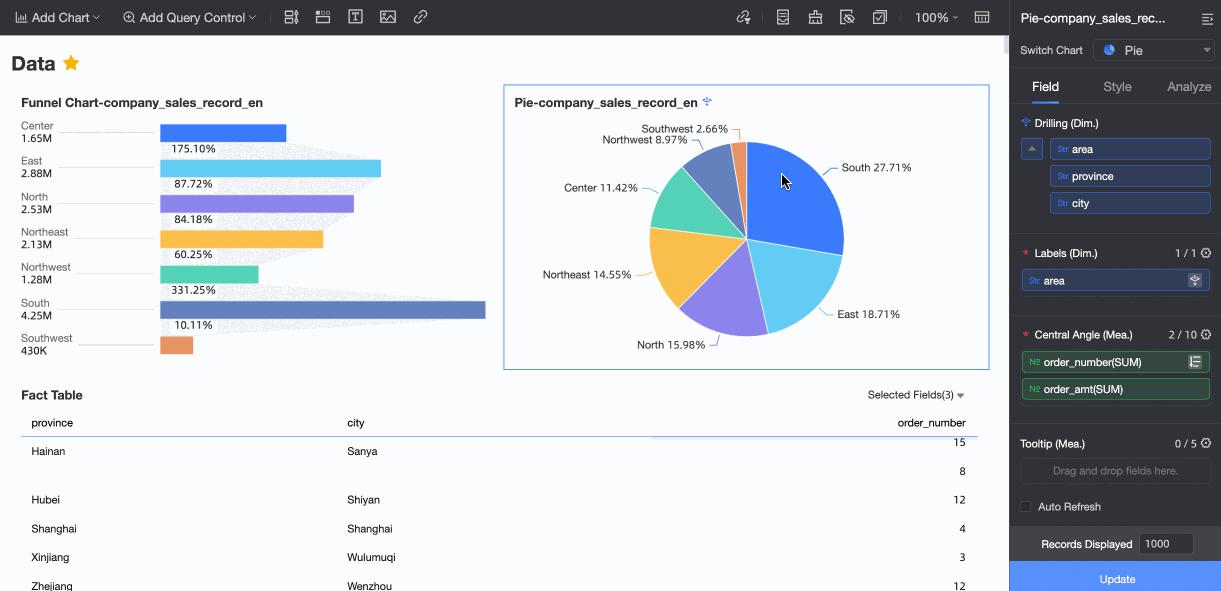
For dashboards with extensive content, use the layout scaling feature for a global view, which aids in quickly locating and adjusting chart layouts, enhancing dashboard creation efficiency.
When a dashboard is content-rich, you can use the layout scaling feature for a global view, enabling you to swiftly locate and modify chart layouts, thereby enhancing dashboard creation efficiency.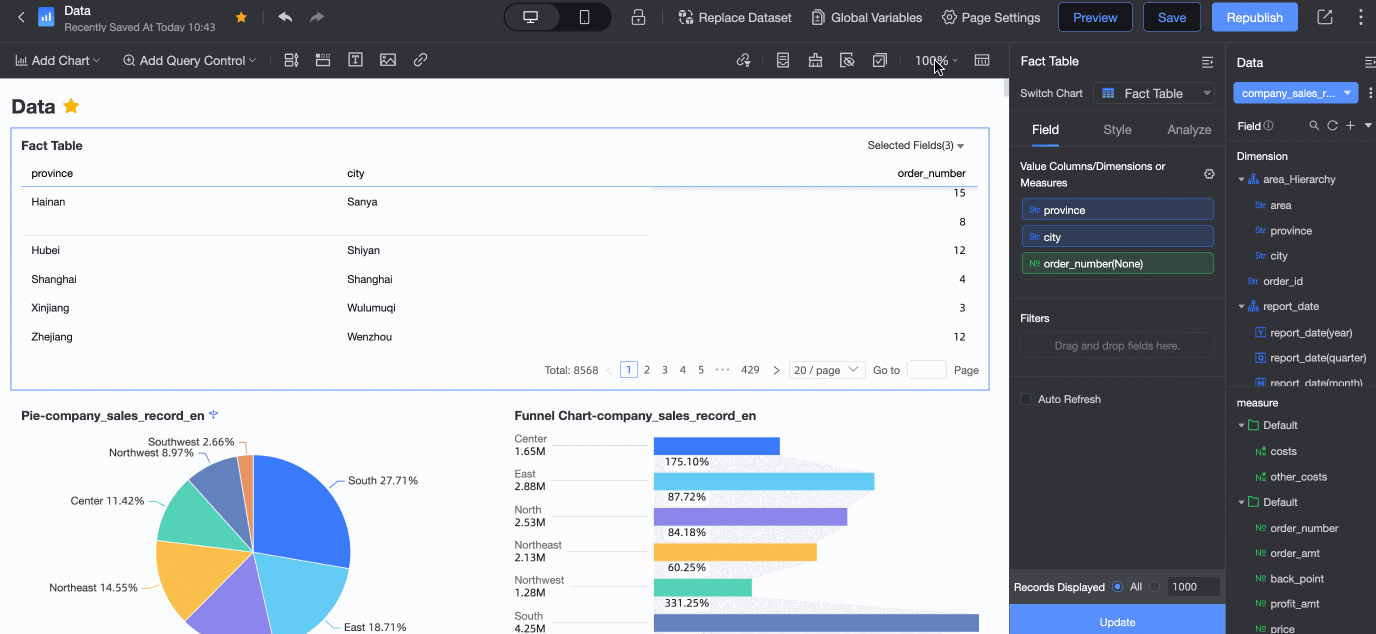
Pitch allows you to set the gap between cards with three settings: Compact, Loose, and Custom. The system automatically adjusts the card spacing for both Compact and Loose options. For the Custom method, you have the flexibility to manually set the pitch between cards along with the card padding.
Pitch between cards determines the space between individual cards, allowing you to manually input the row and column pitch values.
Card padding defines the space within each card, which you can adjust manually.
If a dashboard layout appears too sparse due to large margins inside and outside of components, resulting in low information density, you can optimize the overall margin by adjusting the pitch and card padding to efficiently finalize the dashboard design.
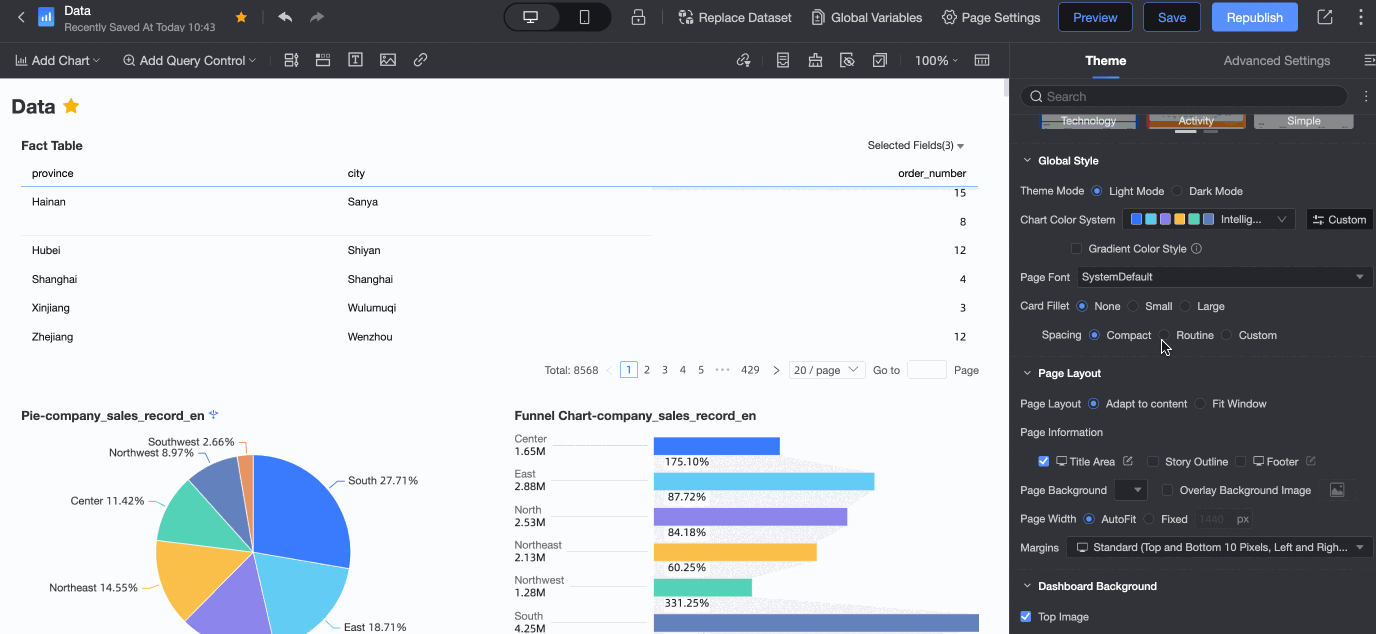
Panel Search
On the dashboard edit page, use the panel search feature to swiftly locate and configure items such as the page subject, chart style, and advanced analytics, enhancing report building efficiency.
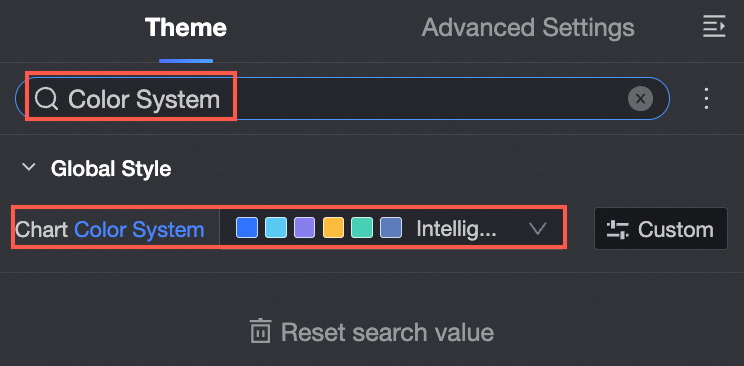
Dashboard Preview State Features
The dashboard preview state offers the following features:
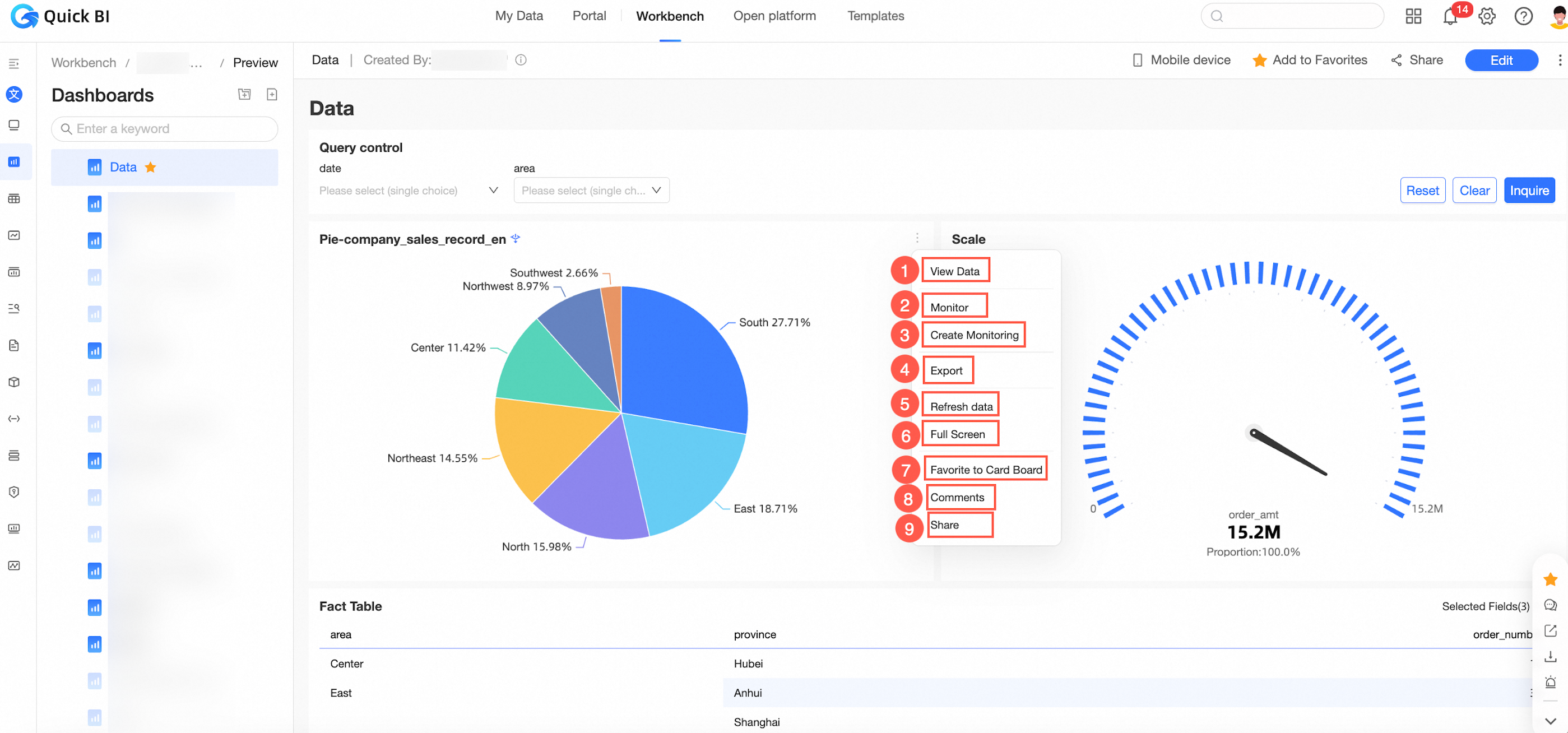
Configuration item | Description |
Configuration item | Description |
① View data | Supports viewing formatted data and raw data, and supports copying data and exporting to Excel. 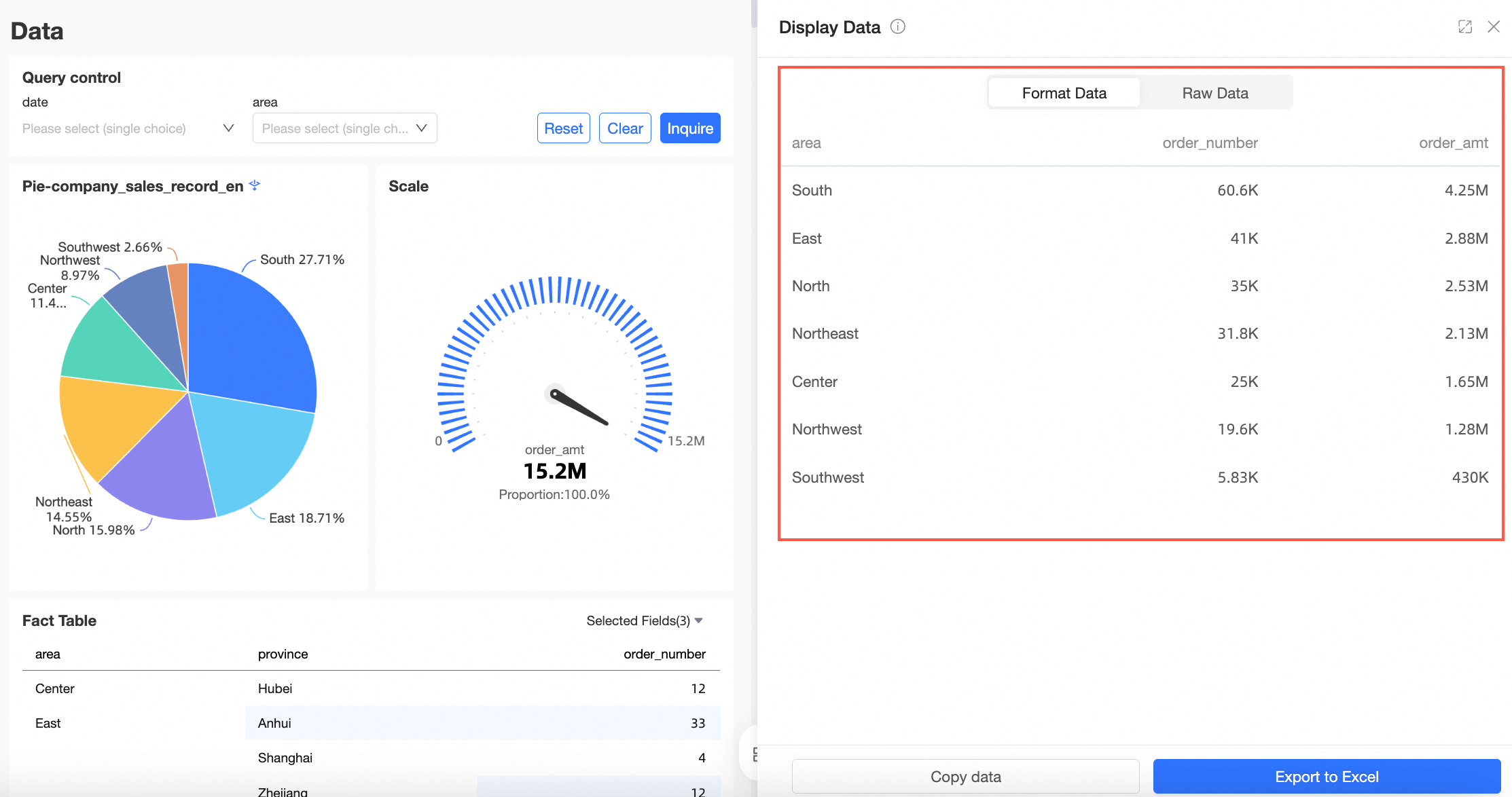
|
② Metric monitoring | Supports viewing metric monitoring. For more information, see overview. |
③ Create monitoring | Supports creating monitoring. For more information, see monitoring metrics overview. |
④ Export | Supports exporting chart data. For more information, see this topic single chart export. |
⑤ Refresh data | Supports refreshing chart data. |
⑥ Full screen | Supports full-screen display of charts. |
⑦ Add to card board | Supports adding to card board. For more information, see add card. |
⑧ Comment | Supports commenting. For more information, see manage dashboards. |
⑨ Share | Supports sharing cards. For more information, see ⑤ share card. |
 Elastic Compute Service (ECS)
Elastic Compute Service (ECS)
 Container Compute Service (ACS)
Container Compute Service (ACS)









 .
.


 icon to access various operations.
icon to access various operations.









 If this error is absent, verify that the image link is accessible on its own.
If this error is absent, verify that the image link is accessible on its own.



























